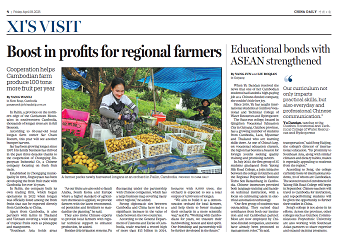Xi sees fruit of poverty relief in Guizhou
Miao ethnic village shows the benefits of relocation and jobs at garment workshop
Since he became general secretary of the Communist Party of China Central Committee in 2012, Xi Jinping has gone on an inspection tour in the country before Spring Festival every year.
He has used the trips to visit people and officials at the grassroots level, learn about people's livelihoods, and extend New Year's greetings to people from around the country.
With the traditional festival falling on Feb 12, Xi, who is also Chinese president and chairman of the Central Military Commission, chose Guizhou province, one of the least developed provinces, with a large number of ethnic groups, as his destination.
He arrived at his first stop, Huawu, a village in Bijie, on Wednesday afternoon. There, he talked with villagers participating in festive activities in a public square and extended his New Year's greetings to people of all ethnic groups across the country.
At the home of ethnic Miao villager Zhao Yuxue, Xi chatted with the family while they were making huangba, a local traditional snack for festivals made from sticky rice and soybean flour wrapped in reed leaves.
The 38-year-old villager and his family members moved into new homes in 2016, thanks to a local resettlement project aimed at getting poor people out of poverty through relocation from environmentally fragile areas.
Zhao said their lives are becoming better, and last year, his family's income exceeded 60,000 yuan ($9,280), much more than before resettlement.
"I wish you a happier and sweeter life," Xi told the family.
While visiting a workshop that helps villagers reduce poverty, Xi was attracted by the exquisite handmade Miao embroidery garments and ornaments made there.
Yang Wenli, 25, who works at the workshop, said a handmade Miao embroidery garment costs more than 10,000 yuan, and 70 percent of their products are sold to customers through livestreaming.
Xi learned about the workers' craft and gave a thumbs-up to the use of Miao embroidery to pass down traditional ethnic culture, aid in the battle against poverty and promote rural vitalization.
"What's traditional is also fashionable," Xi said, urging the promotion of Miao embroidery to make a greater contribution to rural vitalization.
Reducing poverty and improving people's livelihoods have been at the top of the agenda during Xi's 80-plus inspection tours at home since 2012.
He proposed the idea of targeted poverty alleviation in November 2013 when he visited the poverty-stricken village of Shibadong during an inspection tour of Hunan province. The idea became a guideline for the country to meet the target of eradicating extreme poverty in rural areas by the end of last year.
He has said on many occasions that all ethnic groups are part of the big family of the Chinese nation, and no single ethnic minority group will be left behind as the country works toward a moderately prosperous society.
Ahead of Spring Festival in 2020, Xi visited a village of the Wa ethnic group in Tengchong, Yunnan province, where he learned about the locals' poverty relief work and called for efforts to speed up the development of ethnic minorities and areas with large ethnic minority populations.
The last nine poverty-stricken counties in Guizhou province, which were also the last remaining poverty-stricken counties in China, were officially removed from the poverty list in November.
With the country having won the battle against extreme poverty, the CPC Central Committee has decided to shift the focus of the country's rural work from battling poverty to promoting rural vitalization.
The central rural work conference in December stressed the need to consolidate and extend the achievements of poverty alleviation, align the achievements of poverty alleviation with rural revitalization, and prevent people from falling back into poverty.
All rights Reserved. 京ICP备13028878号-8







 Overview
Overview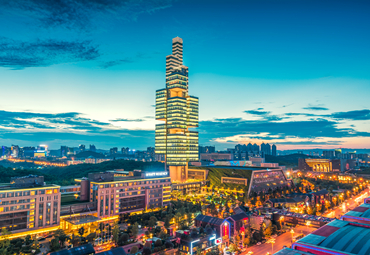 Guiyang
Guiyang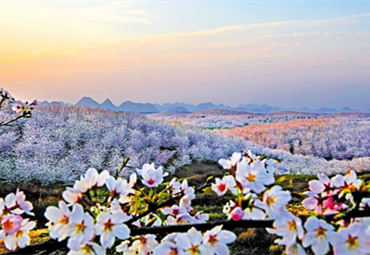 Guian New Area
Guian New Area Liupanshui
Liupanshui Anshun
Anshun Qianxinan
Qianxinan Qiandongnan
Qiandongnan Qiannan
Qiannan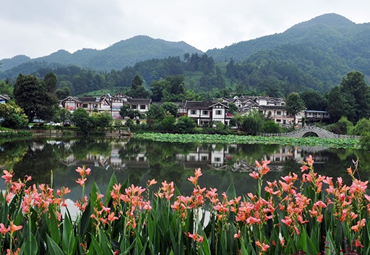 Zunyi
Zunyi Tongren
Tongren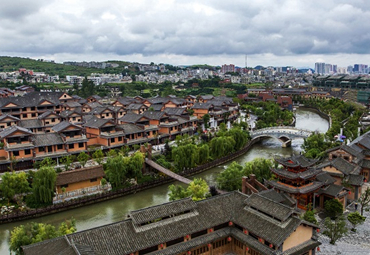 Bijie
Bijie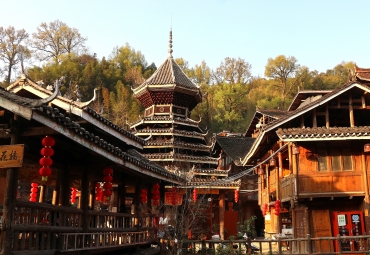 Guizhou commits to culture preservation and rural vitalization
Guizhou commits to culture preservation and rural vitalization Guizhou voice at 2025 national two sessions
Guizhou voice at 2025 national two sessions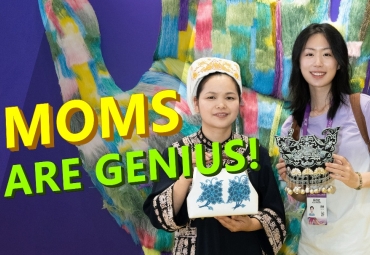 Meet the 'genius moms' at Shenzhen cultural fair
Meet the 'genius moms' at Shenzhen cultural fair 
